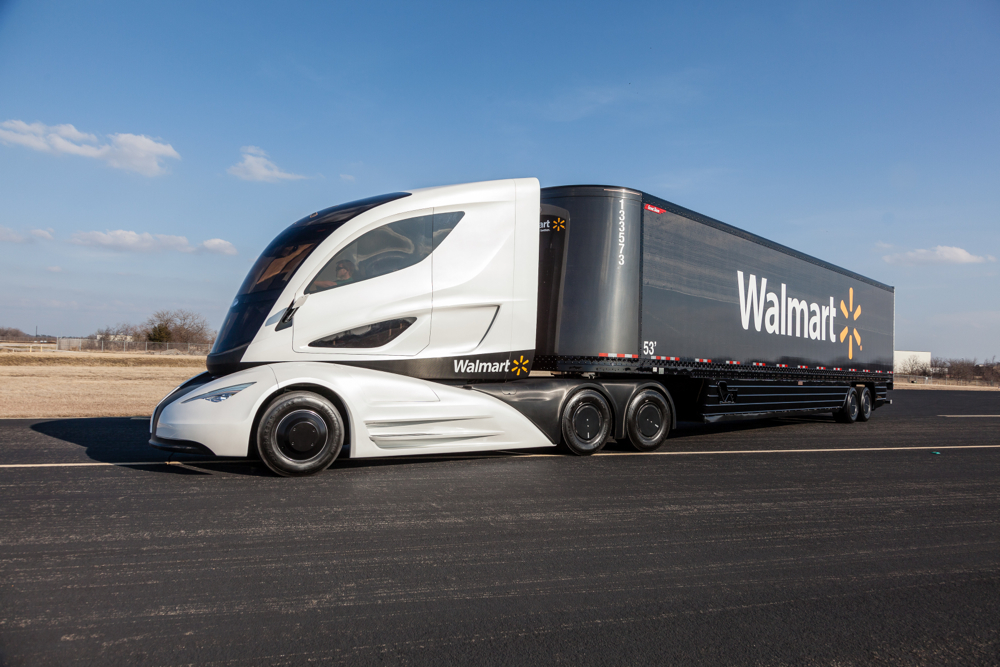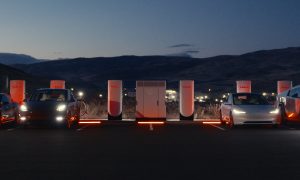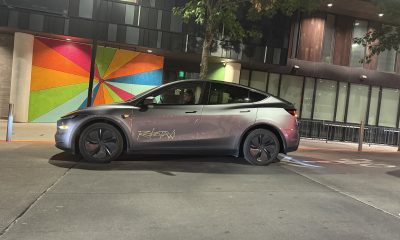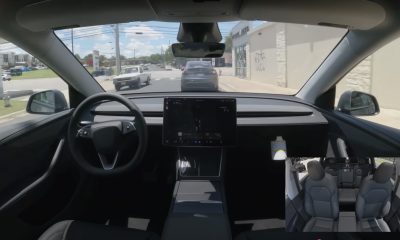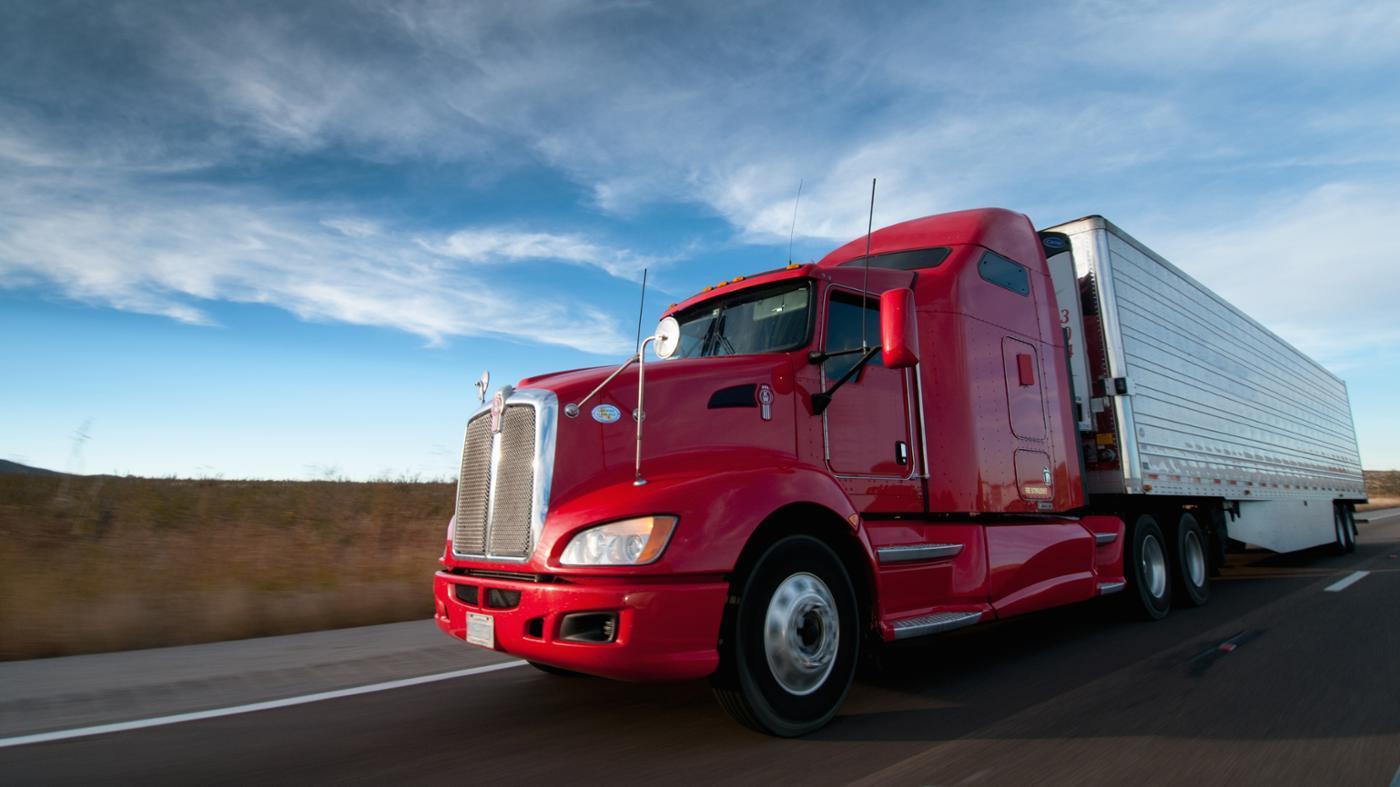

News
Solving the Tesla Semi truck conundrum: here’s what it might take
With the release of Tesla’s updated vision for the future, CEO Elon Musk included plenty of information that was both intriguing and light on details. From that, we will try to make a guess as to what Tesla’s plans are in reference to trucks and shed light on the many obstacles that the company will need to overcome before making its plans a reality.
The light details of Musk’s announcement is par for the course from Tesla and Co, which operates its marketing as much on hype and viral sharing as anything else. This is not a knock against the company, as most other firms would sacrifice virgins every Friday to see the same kind of unsolicited viral marketing that Tesla generates. One thing Elon has mastered is walking the fine line between being informative and forthcoming and being vague enough to cause rampant speculation.
In the company’s “Part Deux” plans for the future, a brief and almost passing mention of semi-trucks was made as a part of Tesla’s developments. Specifically, Must referred to “heavy-duty trucks” and called the idea a “Tesla Semi.” This can imply two things, but probably implies both. It could imply that Tesla plans to make a heavy-duty truck – which could mean a three-quarter ton pickup truck, a Class B heavy truck, or a large Class A freight-hauling truck. Or it can imply that Tesla plans to make a semi-truck only (aka “18 wheeler”). We believe it’s likely that they plan to do all of the above.
Currently, about 70 percent of the freight being moved around the United States is moved on semi-trucks in which a large tractor is attached to a separate trailer. These trucks typically operate at weights up to 80,000 pounds in vehicle, freight, and fuel. They are referred to as “Class A” trucks because the weight class requires an operator’s license of that type. Yet that is only one class of truck. And the typical over-the-road (OTR) truck we usually think of when talking about semi-trucks are just one slice of a large trucking pie.
Nearly 12,000 million tons of freight are hauled by trucks every year in the United States. A significant portion of that hauling is done by smaller trucks rather than large semi-trucks. Package carrying (van) trucks, dump trucks, refuse (garbage) trucks, and other specialized trucks are also common and actually make up a larger portion of the miles driven by heavy-duty trucking. Most of these vehicles have a gross weight of 26,000 pounds or more, by definition, so for our purposes here we will be excluding passenger-style heavy-duty pickups and the like. We are assuming that Musk is referring to freight hauling, given his statements.
With the plan to “cover the major forms of terrestrial transport” that Tesla put forth, we can assume that the company plans to design and potentially build heavy-duty trucks of all stripes. This is realistic given that major truck builders such as Paccar (Kenworth, Peterbilt), Volvo, Mack, etc. already do this. One basic design can be modified to match several needs, thus a single model Mack truck can be both an OTR freight puller and a dump truck with just a few changes to the drivetrain and chassis. Medium-duty trucks, such as package delivery (ala UPS, FedEx) box trucks can also be of a single design with multiple body options. Although the reality is a bit more complicated than this, the gist is that it is possible to design only a couple of vehicles and have them workable in most major truck markets. Knowing this, we will concentrate on the most difficult to achieve, over-the-road heavy-duty semi-trucks.
Knowing that, there are obstacles to overcome. The challenges of a Tesla pickup truck are a beginning, but with a heavy freight hauler, they become exponential. Here are some basic requirements for the biggest of these HD trucks:
- Power output similar to a large diesel engine, equalling roughly 450-550 horsepower and 800-1,200 pound-feet of torque. The amount of output depends heavily on the work to be done. A typical OTR truck, for example, falls in the lower end of this spectrum to maximize fuel efficiency while a typical off-road construction or heavy-load truck (logging and the like) will be at the higher end.
- An operating range of 600 miles per charge for OTR and about half that for more local use (construction, large trailer/freight delivery). Smaller trucks doing package deliveries could operate in the 150-mile range easily.
- The capability to haul as much or more freight than the current diesel-powered offerings do.
That last point is important. Getting a 600-mile range for a truck that can weigh up to 80,000 pounds, freight included, is pretty simple. Getting a 600-mile range for a truck and trailer weighing under 35,000 pounds is not as easy. It’s the old problem of more batteries equals more range, but also equals more weight.
There have been and are current attempts at electrifying semi-trucks, of course. Mostly in the medium-duty package delivery and trailer moving (non-transport) sectors. Solutions involving hydrogen fuel cells, battery-electrics, hydraulic hybrids, and more have been produced. Some did not do well (see Smith Transport) and some are going places (see Parker-Hannifin’s hydraulic hybrids). For the most part, battery-electric over-the-road trucks are seen as a pipe dream by most in the industry. There are good reasons for this. Not the least of which are the battery weight and range expectations of the trucks. Nevermind the likely long charging times required.
Without getting too detailed, most OTR drivers expect to put in 600 or more miles per day in a solo run (one driver) and about 1,000 or so when team driving. Most fuel stops are 15-20 minutes and most trucks have a range of 700-1,000 miles when fitted with dual tanks (one on either side). Having enough lithium-ion batteries on board to do that is daunting. Especially given the high power outputs required to move 80,000 pounds worth of rig and freight.
There are solutions for this, of course. Since Musk devoted so much of his announcement to autonomous driving, we can assume the plan is to include that with trucking. Three possible ideas are:
Relaying. A truck takes a trailer 300-400 miles, swaps it with a trailer going back where it came from, and returns. The trailer swapped continues on with on another truck for another 300-400 miles, then another, and another.. Until its final destination and delivery. This is currently done with certain types of freight and these trucks often have shorter trailers and run them as doubles (one attached to another). Automating this might be a solution. At least for some types of freight.
Battery swapping. The truck drives for a certain range of miles, stops somewhere to have its emptied battery swapped with a full one, and continues. If done in 10-15 minutes and not more than twice a day, this would be realistic under the current trucking paradigm with a driver on board. When automated, the swaps could be as often as you’d like, though each stop means delays in shipment.
Partial electrification. This would be a truck which runs on electricity but has an on-board combustion generator. This is a potential solution, but is not likely to be on Tesla’s agenda.
Another option that should be considered, though it might not be what Tesla fans will want to hear: Musk may be planning on taking a standard semi-truck and automating it. In other words, the Tesla Semi could actually be an automation system, not an actual truck. At least in the beginning. Given the huge amount of technical obstacles, some of which may not be surmountable without combustion, this is a viable guess. At least for OTR trucks.
Any of these ideas or a combination are realistic for a Tesla Semi strategy in regards to OTR trucks. There are no shortage of plans (grandiose and otherwise) for transforming the trucking industry via electrification. Seeing Teslas will at least be interesting.
Elon Musk
Tesla investors will be shocked by Jim Cramer’s latest assessment
Jim Cramer is now speaking positively about Tesla, especially in terms of its Robotaxi performance and its perception as a company.

Tesla investors will be shocked by analyst Jim Cramer’s latest assessment of the company.
When it comes to Tesla analysts, many of them are consistent. The bulls usually stay the bulls, and the bears usually stay the bears. The notable analysts on each side are Dan Ives and Adam Jonas for the bulls, and Gordon Johnson for the bears.
Jim Cramer is one analyst who does not necessarily fit this mold. Cramer, who hosts CNBC’s Mad Money, has switched his opinion on Tesla stock (NASDAQ: TSLA) many times.
He has been bullish, like he was when he said the stock was a “sleeping giant” two years ago, and he has been bearish, like he was when he said there was “nothing magnificent” about the company just a few months ago.
Now, he is back to being a bull.
Cramer’s comments were related to two key points: how NVIDIA CEO Jensen Huang describes Tesla after working closely with the Company through their transactions, and how it is not a car company, as well as the recent launch of the Robotaxi fleet.
Jensen Huang’s Tesla Narrative
Cramer says that the narrative on quarterly and annual deliveries is overblown, and those who continue to worry about Tesla’s performance on that metric are misled.
“It’s not a car company,” he said.
He went on to say that people like Huang speak highly of Tesla, and that should be enough to deter any true skepticism:
“I believe what Musk says cause Musk is working with Jensen and Jensen’s telling me what’s happening on the other side is pretty amazing.”
Tesla self-driving development gets huge compliment from NVIDIA CEO
Robotaxi Launch
Many media outlets are being extremely negative regarding the early rollout of Tesla’s Robotaxi platform in Austin, Texas.
There have been a handful of small issues, but nothing significant. Cramer says that humans make mistakes in vehicles too, yet, when Tesla’s test phase of the Robotaxi does it, it’s front page news and needs to be magnified.
He said:
“Look, I mean, drivers make mistakes all the time. Why should we hold Tesla to a standard where there can be no mistakes?”
It’s refreshing to hear Cramer speak logically about the Robotaxi fleet, as Tesla has taken every measure to ensure there are no mishaps. There are safety monitors in the passenger seat, and the area of travel is limited, confined to a small number of people.
Tesla is still improving and hopes to remove teleoperators and safety monitors slowly, as CEO Elon Musk said more freedom could be granted within one or two months.
News
Tesla launches ultra-fast V4 Superchargers in China for the first time
Tesla has V4 Superchargers rolling out in China for the first time.

Tesla already has nearly 12,000 Supercharger piles across mainland China. However, the company just initiated the rollout of the ultra-fast V4 Superchargers in China for the first time, bringing its quick-charging piles to the country for the first time since their launch last year.
The first batch of V4 Superchargers is now officially up and running in China, the company announced in a post on Chinese social media outlet Weibo today.
The company said in the post:
“The first batch of Tesla V4 Superchargers are online. Covering more service areas, high-speed charging is more convenient, and six-layer powerful protection such as rain and waterproof makes charging very safe. Simultaneously open to non-Tesla vehicles, and other brands of vehicles can also be charged. There are more than 70,000 Tesla Superchargers worldwide. The charging network layout covers 100% of the provincial capitals and municipalities in mainland China. More V4 Superchargers will be put into use across the country. Optimize the charging experience and improve energy replenishment efficiency. Tesla will accompany you to the mountains, rivers, lakes, and seas with pure electricity!”
The first V4 Superchargers Tesla installed in China are available in four cities across the country: Shanghai, Zhejiang, Gansu, and Chongqing.

Credit: Tesla China
Tesla has over 70,000 Superchargers worldwide. It is the most expansive and robust EV charging network in the world. It’s the main reason why so many companies have chosen to adopt Tesla’s charging connector in North America and Europe.
In China, some EVs can use Tesla Superchargers as well.
The V4 Supercharger is capable of charging vehicles at speeds of up to 325kW for vehicles in North America. This equates to over 1,000 miles per hour of charging.
Elon Musk
Elon Musk hints at when Tesla could reduce Safety Monitors from Robotaxi
Tesla could be reducing Safety Monitors from Robotaxi within ‘a month or two,’ CEO Elon Musk says.

Elon Musk hinted at when Tesla could begin reducing Safety Monitors from its Robotaxis. Safety Monitors are Tesla employees who sit in the front passenger seat during the driverless rides, and are there to ensure safety for occupants during the earliest rides.
Tesla launched its Robotaxi fleet in Austin last Sunday, and after eight days, videos and reviews from those who have ridden in the driverless vehicles have shown that the suite is safe, accurate, and well coordinated. However, there have been a few hiccups, but nothing that has put anyone’s safety in danger.
A vast majority — close to all of the rides — at least according to those who have ridden in the Robotaxi, have been performed without any real need for human intervention. We reported on what was the first intervention last week, as a Safety Monitor had to step in and stop the vehicle in a strange interaction with a UPS truck.
Watch the first true Tesla Robotaxi intervention by safety monitor
The Tesla and UPS delivery truck were going for the same street parking space, and the Tesla began to turn into it. The UPS driver parallel parked into the spot, which was much smaller than his truck. It seemed to be more of an instance of human error instead of the Robotaxi making the wrong move. This is something that the driverless cars will have to deal with because humans are aggressive and sometimes make moves they should not.
The Safety Monitors have not been too active in the vehicles. After all, we’ve only seen that single instance of an intervention. There was also an issue with the sun, when the Tesla braked abnormally due to the glare, but this was an instance where the car handled the scenario and proceeded normally.
With the Robotaxi fleet operating impressively, some are wondering when Tesla will begin scaling back both the Safety Monitors and Teleoperators that it is using to ensure safety with these early rides.
CEO Elon Musk answered the inquiry by stating, “As soon as we feel it is safe to do so. Probably within a month or two.”
As soon as we feel it is safe to do so.
Probably within a month or two. We continue to improve the Tesla AI with each mile driven.
— Elon Musk (@elonmusk) June 30, 2025
Musk’s response seems to confirm that there will be fewer Teleoperators and Safety Monitors in the coming months, but there will still be some within the fleet to ensure safety. Eventually, that number will get to zero.
Reaching a point where Tesla’s Robotaxi is driverless will be another significant milestone for the company and its path to fully autonomous ride-sharing.
Eventually, Tesla will roll out these capabilities to consumer-owned vehicles, offering them a path to generate revenue as their car operates autonomously and completes rides.
For now, Tesla is focusing on perfecting the area of Austin where it is currently offering driverless rides for just $4.20 to a small group of people.
-

 News5 days ago
News5 days agoTesla Robotaxi’s biggest challenge seems to be this one thing
-

 News2 weeks ago
News2 weeks agoTesla confirms massive hardware change for autonomy improvement
-

 Elon Musk2 weeks ago
Elon Musk2 weeks agoElon Musk slams Bloomberg’s shocking xAI cash burn claims
-

 News2 weeks ago
News2 weeks agoTesla China roars back with highest vehicle registrations this Q2 so far
-

 News2 weeks ago
News2 weeks agoTesla features used to flunk 16-year-old’s driver license test
-

 News2 weeks ago
News2 weeks agoTesla dominates Cars.com’s Made in America Index with clean sweep
-

 News2 weeks ago
News2 weeks agoTexas lawmakers urge Tesla to delay Austin robotaxi launch to September
-

 News2 weeks ago
News2 weeks agoTesla’s Grok integration will be more realistic with this cool feature

